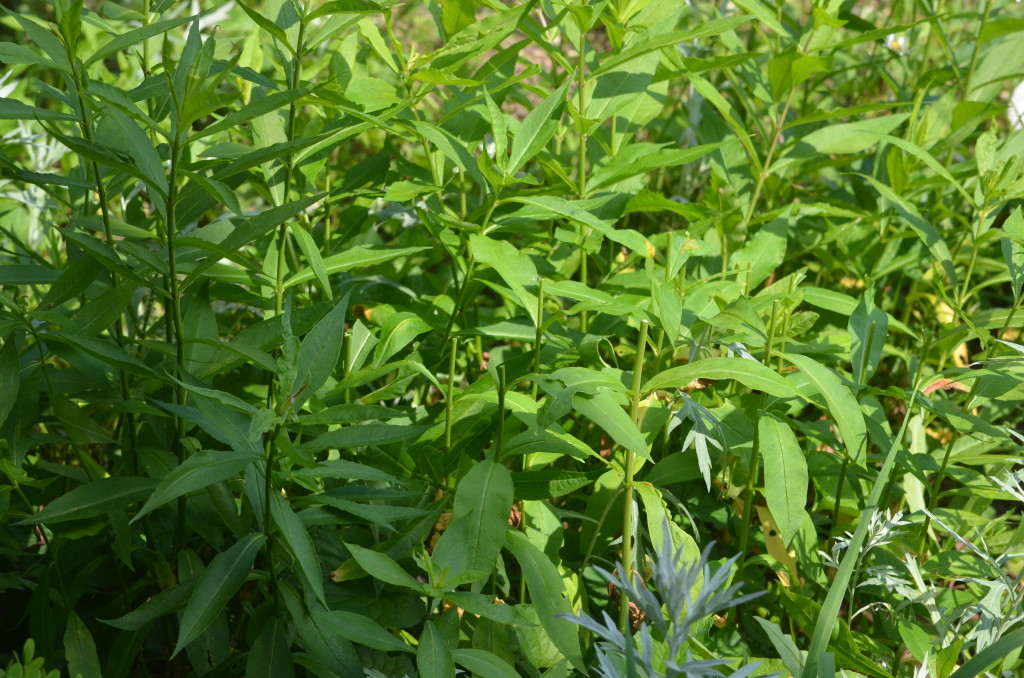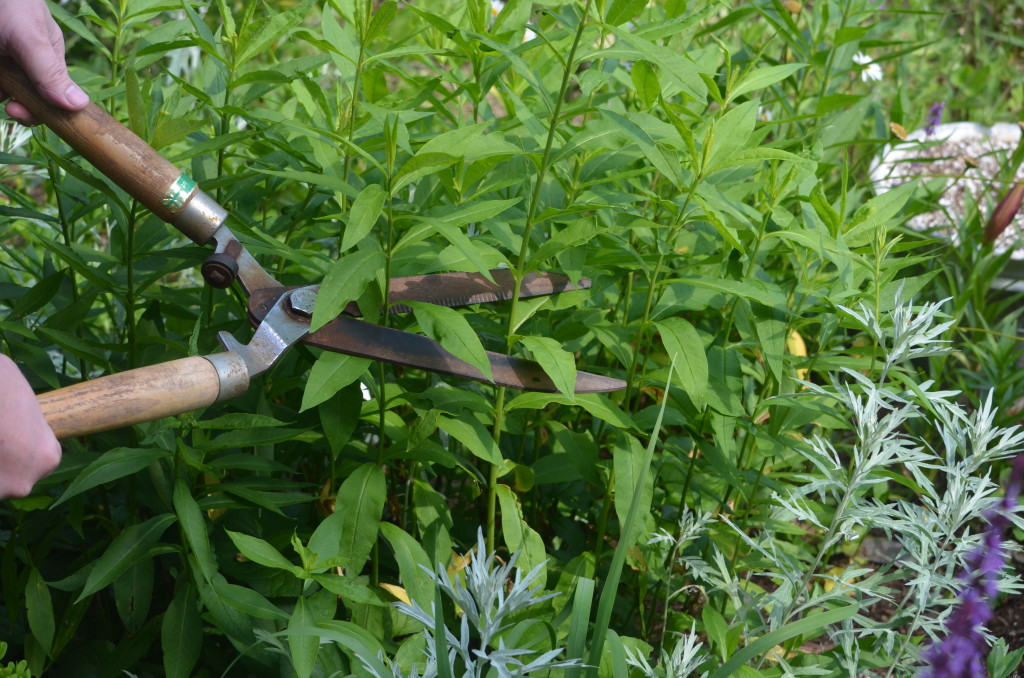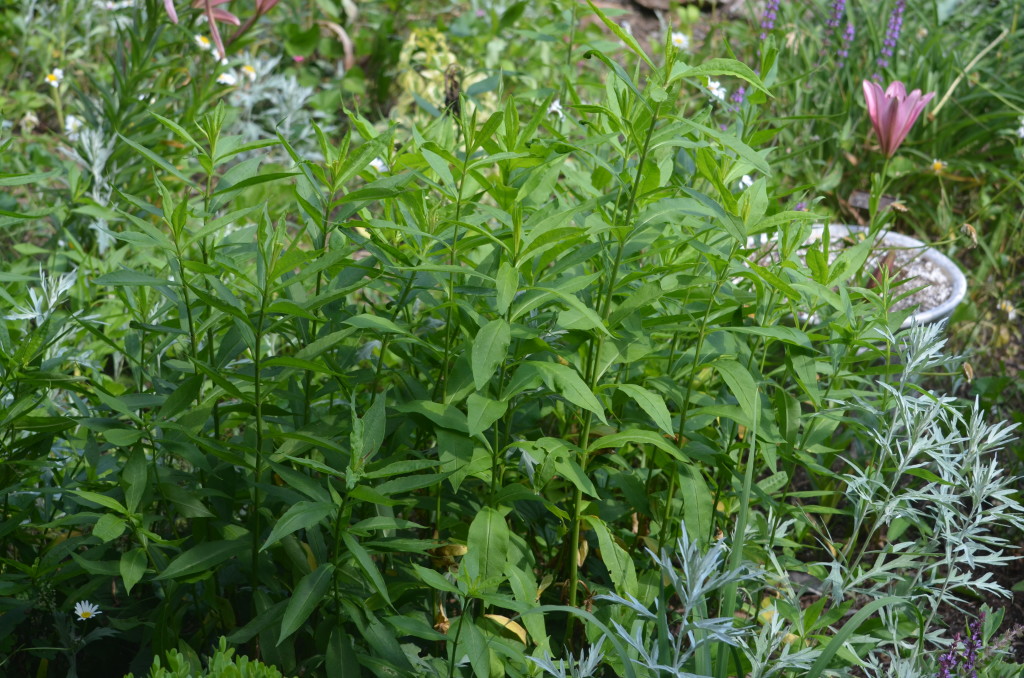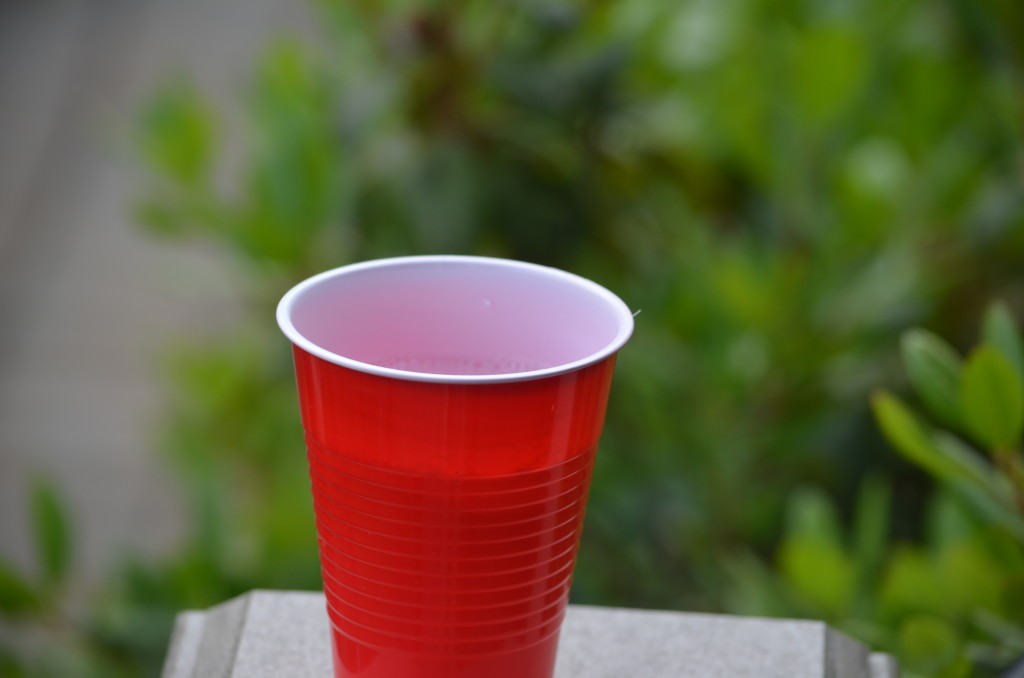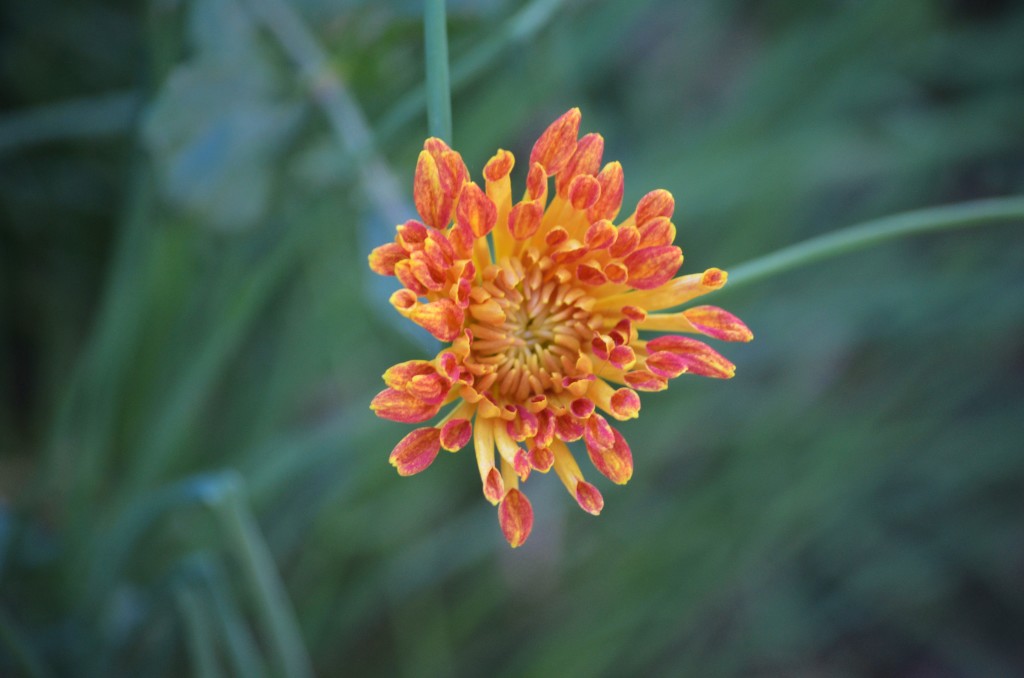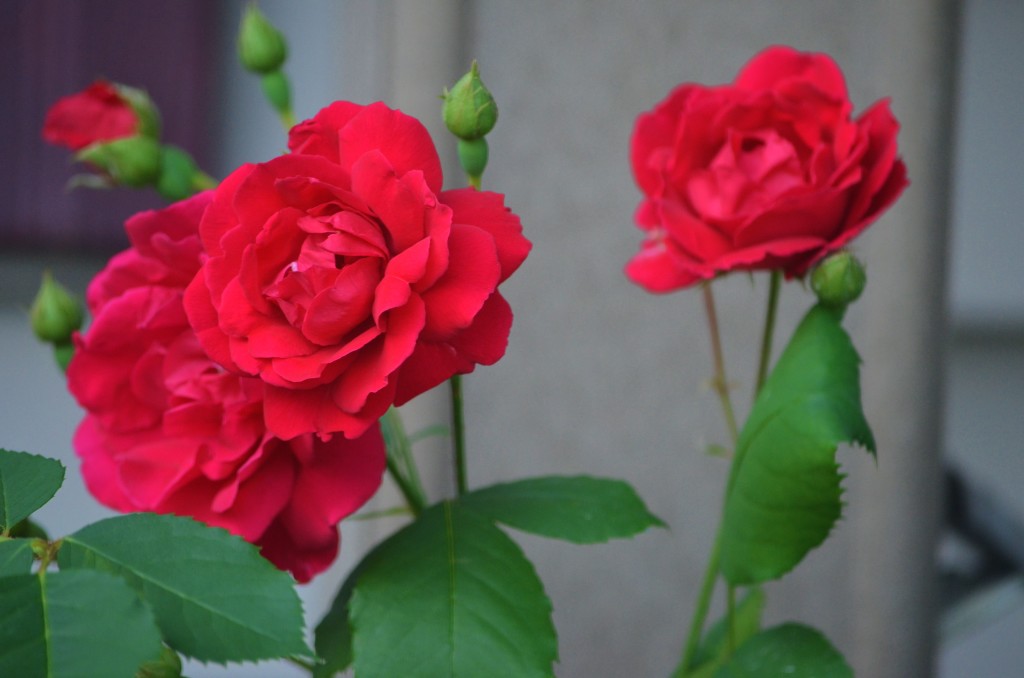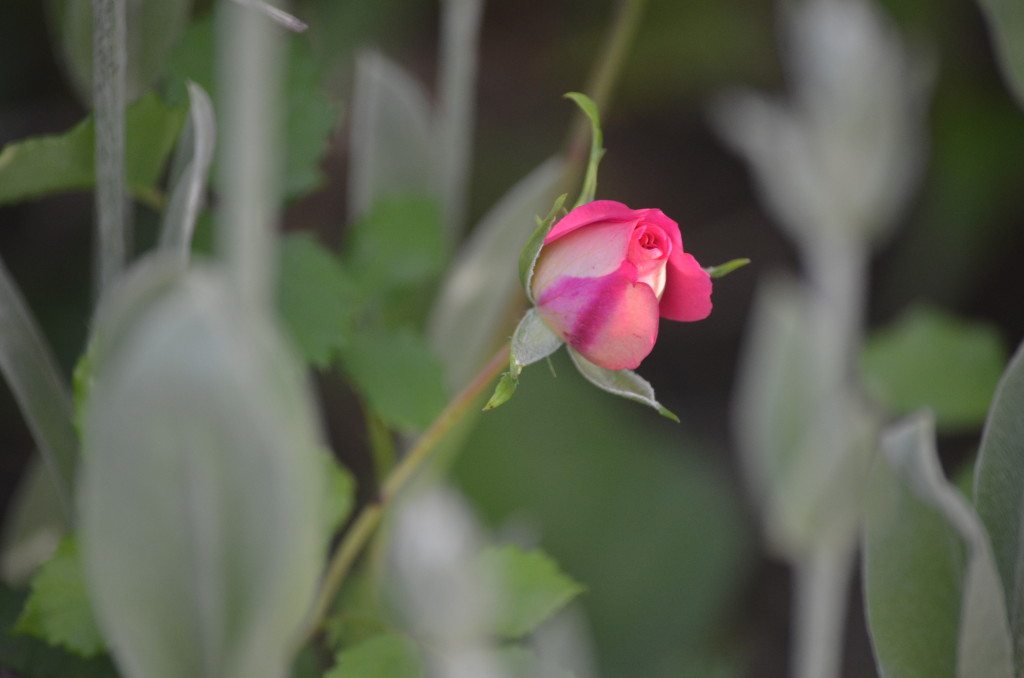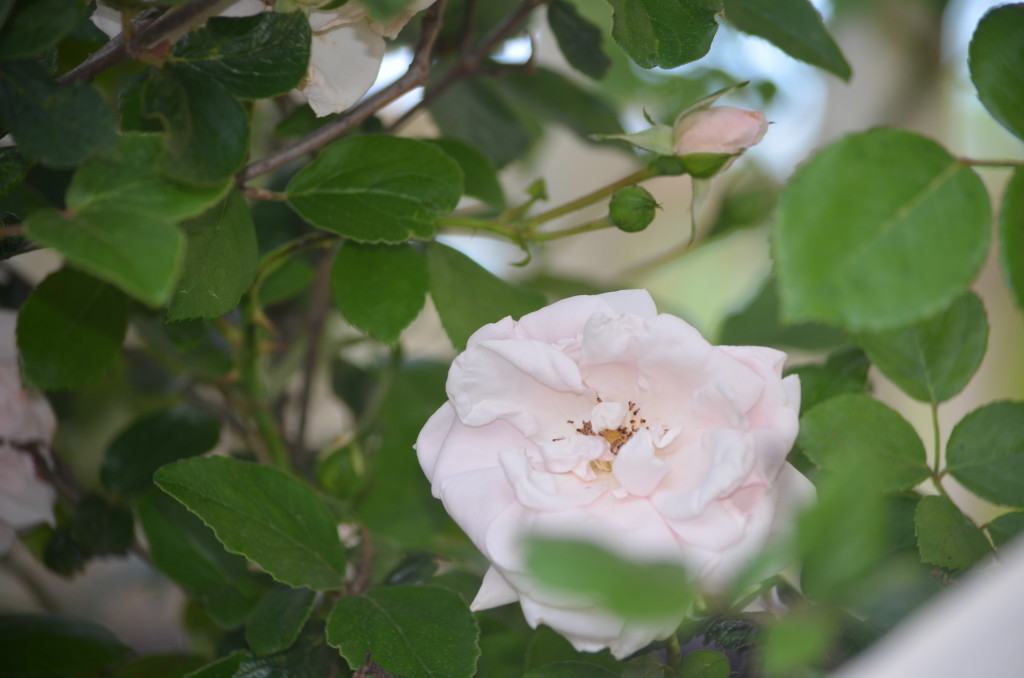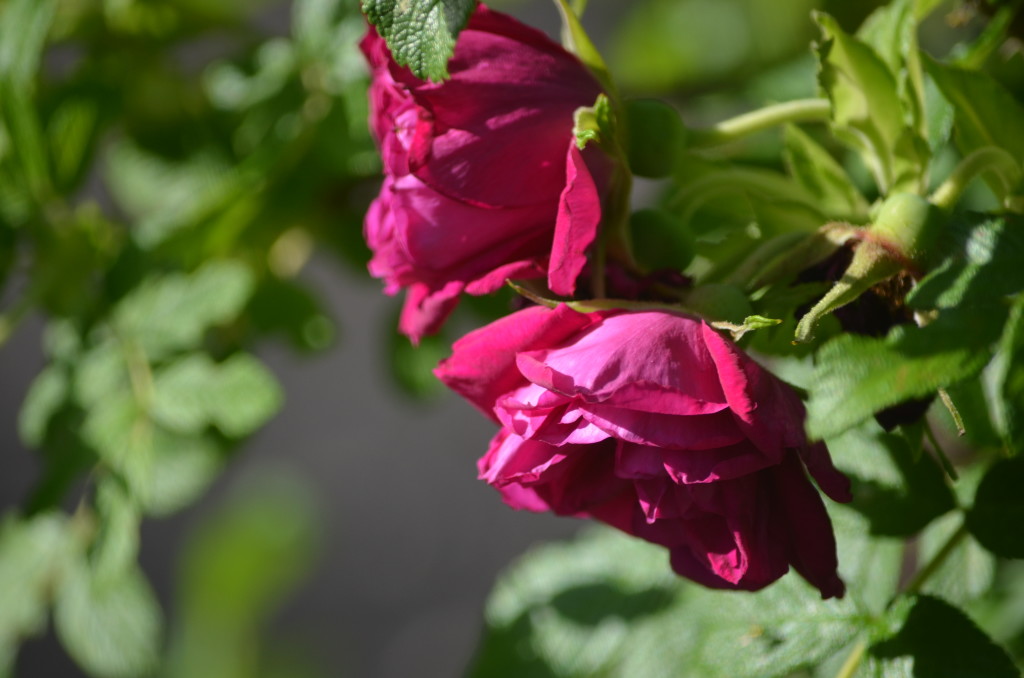There is a rose that grows over the arbor headed to the back 40 here that is an both a puzzle a royal pain, yet owns my heart .The puzzle: It bothers me that I do not know it’s correct name . The pain comes form the millions of thorns on its 20 ft long canes that sprout up in every adjacent shrub, plant and into the path as well aitning to snare the casual visitor and gardener alike. 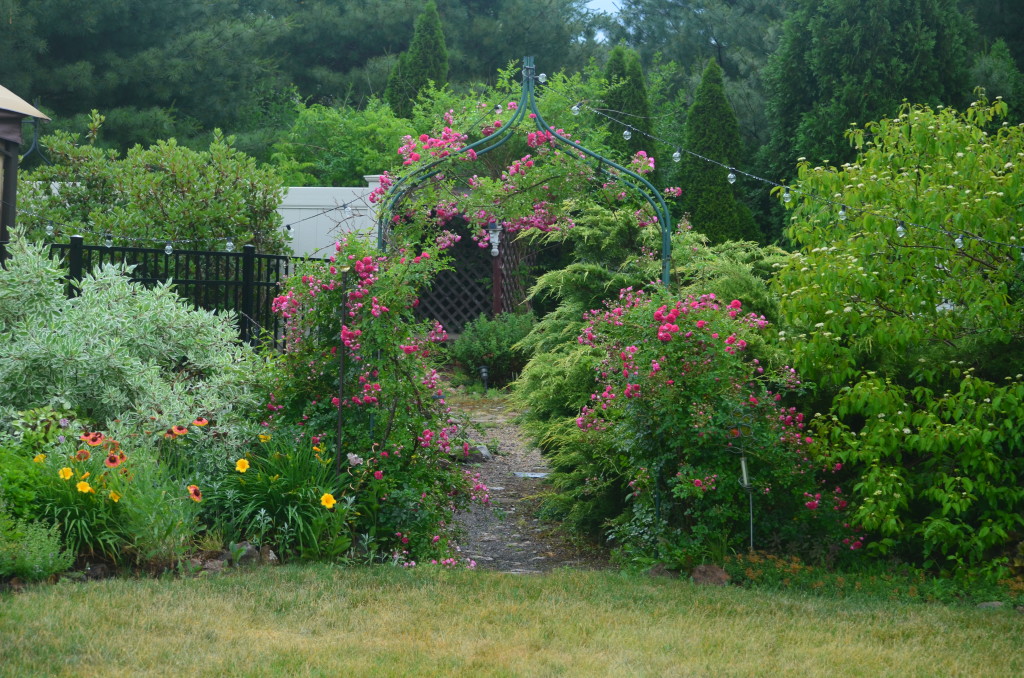
It is a rambler, and for years I thought it may be the Seven Sisters Rose, but upon further research I have discovered that Seven Sisters is a common name given to may unidentifiable ramblers and to the real deal has very distinct hairy leaves and a scent that mine lacks. It could be Dorothy Perkins, maybe, After getting mired in page after page of rose descriptions , I give up but maybe someday a visitor here on this page or oto the actual garden may have the answer.
For now, I am going to return to calling it Grammy’s rose,which is our families common name for it , but I will in honor of its former name-in-my -head I give you seven reasons NOT to try this rose in your own garden,
1. It is a rambler, probably wichuranan, and grows 20+ feet in all directions. Currently, it is spread into two garden beds and completely blocking the pathway it marks.It is a monster.
2.It is viciously thorny. Pruning it requires , truthfully, a plastic bubble around you and all your parts. It will rip your clothing, hook into your skin, and stick into to your gloves when you grab pruned branches so deeply you almost want to just put the gloves in the compost along with the thorns rather than try to free them. Even after it has been pruned and sitting on the burn pile for a full year the thorns will still cause distress to the unwary person who picks them up.
3. It looks so dreamy with it’s mass of carmine bundles of flowers all dangling over the arch and path that you can’t wait to get up close, stick you nose in and smell….prepare for epic disappointment, it is scentless.
4.It gets black spot horrifically. I have tried over the years every method ever written about to stop BS on this rose, I have even cut it to the ground, removed every leaf from the area , took out the topsoil and mulch and replace it with new soil and mulch only to watch the BS spread like wildfire as soon a the canes reemerged. I don’t even try anymore I just ignore it as it certainly does not affect the vigor of this rose in any way
5. Some years the sheer weight of it on the arbor threatens to pull the whole thing over during bad storms , in others It suffers considerable dieback and therefore must be pruned quite hard and we have already discussed the misery that accompanies that effort.
6. When it is done blooming , all seven million of the dead flowers remain firmly stuck on the canes in brown squishy ugly masses. This ,as it turns out ,is yet another time you need to suit up and prune. O!, the suffering
7.Despite all the care it requires, it blooms only once a year for maybe three weeks
So you might be wondering why I don’t shovel prune it and replace it with a lovely disease resistant and mannerly climber?
Well, it was my gram’s rose. She received it as a gift from her parents as either a wedding or housewarming gift, the story remains unclear. For the maybe 60 years it grew in front of her little house on High Street it was a source of pride for her as those who drove by ALWAYS commented on it when she saw them in the market, or at church or about town, Her children all knew of her attachment to it and were ever careful not to play football near it ( although seriously if they had ever touched it before they would not have given that a thought) and not to cut it when mowing around it. It did not live in a garden, just planted squarely in the center of the front lawn growing up and over a poor little white trellis of about 3 ft that groaned under the weight and virtually disappeaared during bloom time.
In my lifetime, I only remember it being referred to as ‘Grammy’s rose” , though it may have has another name before she was actually a grammy.
I took cuttings from it when I was a complete novice gardener, and by some divine intervention , they rooted and now the rose lives here. For the record, other than the three cuttings I took way back then ( one lives at my Aunt’s house) I have never successfully rooted it again.
A few years after I took the cuttings, I remember oh so very clearly the year my Uncle, up on a visit from Missouri, cut grammy’s rose back citing the vicious tangle of thorns and branches that made every effort at mowing the lawn an excercise in self-inflicted pain as well as a misguided belief that it would make the rose perform better.. The anguish she felt when she found out it had been hacked to the ground became the talk of every family gathering and persisted long after the actual act as the rose never bounced back. At first it developed Black Spot, then completely lost it’s will to take over the world , and finally was removed . Sigh.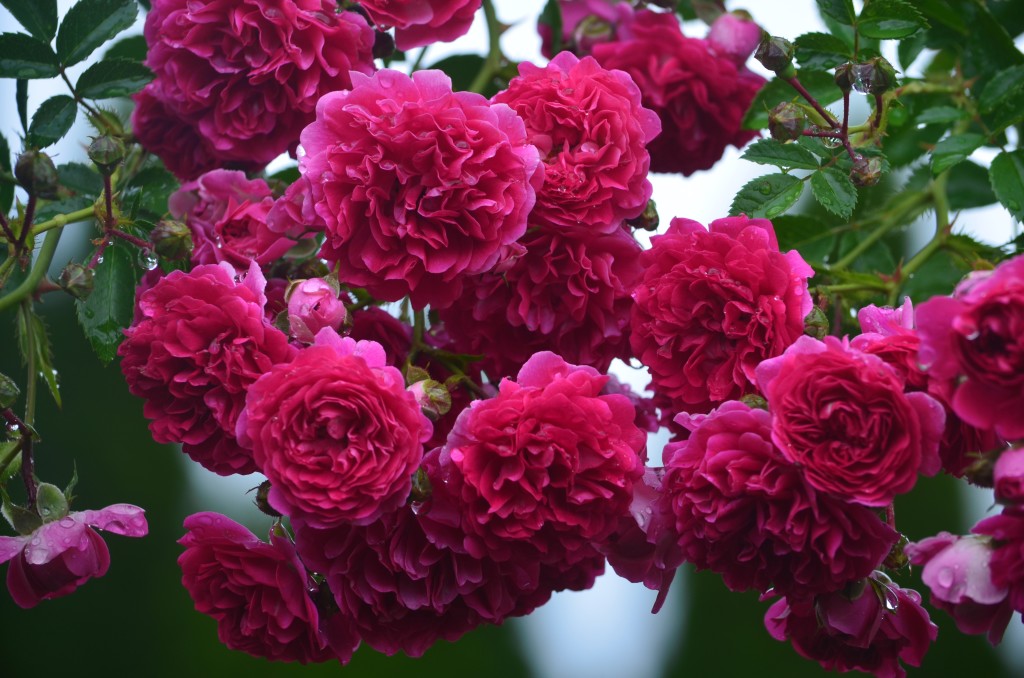
Yet it lives on here, and will continue to do so in her memory. When it blooms so spectacularly in late June/early July all is forgiven .
